Mastering Ios 18: Unlock Hidden Features
I've discovered that mastering iOS 18's hidden features can greatly enhance my iPhone experience. To boost battery life, I enable Low Power Mode, activate Optimized Battery Charging, and set Auto-Lock to 30 seconds or less. I've also customized my gesture controls, using three-finger gestures for copy, paste, undo, and redo actions, and created unique swipe gestures for specific apps or functions. Additional features like Wallet access from the lock screen, Back Tap actions, and Control Center customization have streamlined my workflow. By uncovering these hidden gems, I've only scratched the surface of what iOS 18 has to offer.
Key Takeaways
- Enable Low Power Mode, Optimized Battery Charging, and Auto-Lock to boost iPhone battery life.
- Utilize three-finger gestures for copy, paste, undo, and redo actions on iPhone.
- Customize Control Center with Standard, Modular, or Custom layouts for easy access to frequently used features.
- Access Wallet from the lock screen or home screen with biometric authentication for secure transactions.
- Employ Focus Mode with tailored notification management and Mindful Notifications for enhanced productivity and reduced distractions.
Boost Iphone Battery Life
Boosting my iPhone's battery life is a top priority, and with iOS 18, I've discovered several strategies to make it happen. By implementing these battery optimization tips, I've managed to squeeze out a few extra hours of usage from my device. One of the most effective methods is to enable Low Power Mode, which limits background app refreshes, reduces network activity, and decreases display brightness.
Another energy-saving feature I've found useful is the Optimized Battery Charging option. This feature helps prolong battery lifespan by reducing the time spent at 100% charge. To access this feature, go to Settings > Battery > Battery Health > Optimized Battery Charging. I've also found that customizing my iPhone's Auto-Lock setting can make a considerable difference. By setting it to 30 seconds or less, I've reduced unnecessary screen time and saved battery life.
Additionally, I've taken advantage of iOS 18's built-in energy-saving modes, such as the Low Data Mode. This feature reduces data usage by limiting background app refreshes and decreasing network activity. To enable Low Data Mode, go to Settings > Mobile Data > Low Data Mode. By combining these battery optimization tips and energy-saving modes, I've managed to considerably extend my iPhone's battery life. With these strategies, I'm confident that you can do the same and enjoy a more efficient iPhone experience.
Master Iphone Gestures
I'm now going to walk you through iPhone gestures, an essential aspect of maneuvering your device efficiently. I'll start by explaining the basic gesture controls that you use daily, such as tapping, pinching, and swiping. I'll also cover advanced swipe options that can help you multitask and access features quickly.
Basic Gesture Controls
With iOS 18 at your fingertips, mastering the basic gesture controls is key to revealing a seamless iPhone experience. I've found that understanding these fundamentals is vital in accessing the full potential of my device. To start, let's focus on the home screen. A simple tap on an app icon will open it, while a long press will reveal a contextual menu with various options.
Swiping gestures are also essential. A swipe up from the bottom of the screen will return me to the home screen, while a swipe down from the top will open the Notification Center. I can also use swipe gestures to navigate between open apps — a swipe left or right will switch between them. Additionally, iOS 18's touch sensitivity allows for precise control, making it easy to use gesture shortcuts to perform tasks quickly. For example, I can use a three-finger tap to copy and paste text or a three-finger swipe to undo and redo actions. Mastering these basic gestures will provide a solid foundation for exploring more advanced features in iOS 18.
Advanced Swipe Options
Delving deeper into iOS 18's gesture controls, I've discovered that advanced swipe options can greatly enhance my iPhone experience. With the ability to customize swipe gestures, I can tailor my interactions to suit my preferences. For instance, I can adjust the gesture sensitivity to accommodate my screen protector or gloves, ensuring that my swipes register accurately.
By maneuvering to Settings > Accessibility > Touch, I can fine-tune my gesture controls to suit my needs. I can also explore the Back Tap feature, which allows me to double or triple tap the back of my iPhone to trigger custom actions. This feature can be especially useful for tasks that require quick access, such as taking a screenshot or locking my device.
Furthermore, I can take advantage of swipe customization to create unique gestures for specific apps or functions. For example, I can create a custom gesture to quickly access my camera or switch between apps. By mastering these advanced swipe options, I can reveal a more efficient and intuitive iPhone experience. With iOS 18, the possibilities for gesture-based interactions are endless, and I'm excited to explore what's possible.
Quick Access to Wallet
Mastering iOS 18: Reveal Hidden Features
Quick Access to Wallet
Several key features in iOS 18 make managing payments and passes more efficient, and one such feature is the quick access to Wallet. I've found that having easy access to my Wallet has streamlined my daily transactions and travel. With iOS 18, I can quickly access Wallet from my lock screen or home screen, allowing me to switch between different payment cards, passes, or loyalty programs with ease.
Wallet security is also exceptional in iOS 18. Biometric authentication, such as Face ID or Touch ID, guarantees that only I can access my Wallet. Additionally, Wallet organization has been revamped, allowing me to categorize my cards and passes into folders and view my transaction history with ease.
To access Wallet quickly, I can double-click the side button on my iPhone to instantly bring up my Wallet. I can also add a Wallet widget to my home screen for easy access. This feature has been particularly useful when I'm on-the-go, as I can quickly switch between different payment methods or access my boarding pass without having to navigate through multiple screens.
Customize Control Center
Control Center has become an indispensable tool in my daily iOS 18 experience, allowing me to swiftly access and adjust various settings to suit my needs. By customizing the Control Center, I can optimize its functionality to enhance my overall iOS experience. To start customizing, I access the Settings app and navigate to the Control Center section.
| Control Layout | Description | Availability |
|---|---|---|
| Standard | Provides access to frequently used controls like Wi-Fi, Bluetooth, and Brightness. | Default |
| Modular | Offers a compact view of controls, ideal for smaller screens. | Optional |
| Custom | Allows users to create a personalized layout with custom icons and controls. | Requires iOS 18 update |
Customizing the Control Center involves a few simple steps. First, I tap on the 'Customize Controls' option, which presents me with a list of available controls. I can then add or remove controls to create a layout that suits my needs. For instance, I can add custom icons for frequently used features like the Flashlight or Camera. I can also rearrange the controls to prioritize my most-used settings.
Enable Back Tap Actions
To access the full potential of my iOS device, I'll enable Back Tap actions, which allow me to perform various tasks by tapping the back of my iPhone. I can set up to two Back Tap actions – one for a double tap and another for a triple tap. By customizing these actions, I can streamline my workflow and access frequently used features with ease.
Using Back Tap
With iOS 18, I can easily enable back tap actions on my iPhone. This feature allows me to perform custom actions by double or triple tapping the back of my device. To start using back tap, I need to access the back tap settings, which can be found in the Settings app under Accessibility > Touch > Back Tap.
Once I'm in the back tap settings, I can configure the double and triple tap gestures to perform various actions. Here are a few examples of what I can do with back tap gestures:
- Open an app: I can assign a double or triple tap to open a frequently used app, such as the camera or music app.
- Take a screenshot: I can set up a back tap gesture to take a screenshot, which can be useful for capturing content on my screen.
- Lock the screen: I can also use a back tap gesture to lock my screen, which can be a convenient alternative to pressing the side button.
Setting Double Tap
Setting Double Tap (Enable Back Tap Actions)
I'll show you how to set double tap on your iOS 18 device. To start, go to Settings > Accessibility > Touch. In the Touch settings, scroll down to the 'Back Tap' section. Here, you'll find the Double Tap and Triple Tap options. Since we're focusing on double tap, select 'Double Tap.'
Activating double tap allows you to perform a range of actions with just two taps on the back of your device. You can choose from a variety of double tap settings, including system actions like Lock Screen, Volume Down, and Mute, as well as shortcuts like Accessibility shortcuts, which allow you to quickly toggle features like AssistiveTouch, Switch Control, and more.
Once you've selected your desired action, save your changes and try out your new double tap feature. With double tap enabled, you can perform your chosen action quickly and efficiently, making it easier to use your device.
Customizing Triple Tap
I've enabled double tap on my iOS 18 device, and now I'll set up triple tap to access even more possibilities. This feature, also known as Back Tap, is part of the accessibility options that allow users to customize their device to suit their needs.
To customize triple tap, I'll go to Settings > Accessibility > Touch > Back Tap. Here, I can choose what action I want to perform when I triple tap on the back of my device. The options are extensive, and I can choose from a variety of actions, including:
- System Actions: This includes actions like taking a screenshot, locking the screen, or opening the app switcher.
- Accessibility Features: This includes features like turning VoiceOver on or off, or opening the Accessibility Shortcut menu.
- Shortcuts: This allows me to create custom shortcuts using the Shortcuts app, giving me even more possibilities for customizing my device.
Use Iphone as Webcam
Using my iPhone as a webcam is a convenient feature that I've grown to rely on. With iOS 18, this feature is more seamless than ever. To set up my iPhone as a webcam, I simply need to verify that my iPhone and Mac are connected to the same Wi-Fi network and signed in with the same Apple ID. Once I've done this, I can use the Continuity Camera feature to turn my iPhone into a webcam.
I've found that the webcam setup is incredibly easy to use. I just need to open the app I want to use – such as Zoom or Skype – and select my iPhone as the camera. This will prompt my iPhone to automatically switch to camera mode, allowing me to use it as a webcam. The video quality is also impressive, with crisp and clear footage that's perfect for video calls and conferencing.
One of the standout features of using my iPhone as a webcam is the ability to use the Ultra Wide camera on my iPhone. This allows me to capture more of my surroundings and make video calls feel more immersive. Additionally, the advanced image processing capabilities of my iPhone guarantee that the video quality is always first-rate, even in low-light conditions. Overall, using my iPhone as a webcam is a convenient and high-quality solution that I've come to rely on.
Streamline Notifications
Streamlining notifications is essential for maintaining focus and productivity. iOS 18's notification system offers a range of features that help prioritize and manage alerts from various apps.
One of the key features that I find particularly useful is notification grouping. This feature groups notifications from the same app, allowing me to quickly scan and manage related alerts. For instance, if I receive multiple notifications from a social media app, they're grouped together, making it easier for me to read and respond to them.
To take my notification management to the next level, I also use the following features:
- Notification Scheduling: I can schedule notifications to be delivered at a specific time, allowing me to focus on my tasks without distractions.
- Notification Summaries: I can set up notification summaries, which provide a brief overview of the most important alerts, allowing me to quickly catch up on any missed notifications.
- Notification Filters: I can filter out notifications from specific apps or categories, ensuring that I only receive alerts that are relevant to my needs.
Advanced Camera Features
With the latest iOS 18 update, my iPhone camera has become an incredibly powerful tool, thanks to its advanced camera features. One of my favorites is Night mode, which allows me to capture stunning low-light photos with reduced noise and improved detail. I also appreciate the flexibility of Portrait Lighting, which lets me adjust the lighting effects on my subject's face to achieve a more professional look.
For close-up shots, I use Macro photography to capture intricate details of objects and textures. Cinematic mode is another feature I find useful, as it allows me to record videos with a shallow depth of field, creating a cinematic effect. I can also customize my photos with Photographic Styles, which provide a range of presets to enhance the look and feel of my images.
When it comes to fast-paced scenes, I rely on Action mode to capture smooth and stable footage. Additionally, I can fine-tune my camera settings with HDR settings and Photo Filters to achieve the desired look. I've also discovered that I can access Camera Shortcuts to quickly switch between different camera modes and settings. Overall, the advanced camera features in iOS 18 have taken my mobile photography to the next level, and I'm excited to explore more creative possibilities with my iPhone camera.
Personalize Your Iphone
Now that I've explored the advanced camera features, I'm excited to customize my iPhone experience further by personalizing its settings and features to my liking. iOS 18 offers various options to tailor my iPhone to suit my needs, so I can work and play more efficiently.
To start, I can personalize my iPhone's appearance by changing its wallpaper, choosing from a variety of iPhone themes, and customizing widgets to display relevant information. I can also organize my apps into folders and prioritize frequently used apps for easier access.
Here are three key features I've discovered to enhance my iPhone experience:
- Customization Options: I can personalize my iPhone's look and feel by selecting from various iPhone themes, custom icons, and widget customization options.
- Notification and Sound Options: I can choose from different ringtones, notification sounds, and customize Siri shortcuts to streamline my interactions with my iPhone.
- Privacy and Security Options: I can manage my privacy settings, set up screen time management, and restrict access to sensitive information to guarantee my iPhone remains secure.
Iphone Keyboard Tricks
When using my iPhone, I've learned to streamline my typing experience with several keyboard tricks. I can quickly navigate the keyboard, access a wide range of emojis and symbols, and utilize advanced typing options to boost my productivity. In this section, I'll share these techniques to help you master the iPhone keyboard and get the most out of iOS 18.
Quick Keyboard Navigation
Mastering Quick Keyboard Navigation on your iPhone requires a few simple techniques that can greatly enhance your typing experience. One of the most efficient ways to navigate your keyboard is by using keyboard shortcuts and text navigation features.
- Flick to type: To quickly switch between uppercase and lowercase letters, simply flick up or down on the shift key. This eliminates the need to tap the shift key every time you want to change case.
- Slide to delete: To delete multiple characters at once, place your finger on the delete key and slide left or right. The more you slide, the more characters will be deleted.
- Swipe to move cursor: To move the cursor to a specific position in your text, swipe left or right on the keyboard with one finger. This allows for precise text navigation without having to tap on the screen.
Emoji and Symbol Access
The iPhone keyboard offers several shortcuts for easy access to emojis and symbols. One of the most notable features is the Emoji Keyboard, which can be accessed by tapping the globe icon on the keyboard. This opens a separate keyboard with various emoji categories, allowing you to easily browse and select the desired emoji.
To further customize your emoji experience, iOS 18 allows you to create emoji shortcuts. By going to Settings > Keyboard > Text Replacement, you can create custom shortcuts for frequently used emojis. For example, you can set "smile" to automatically replace with the smiling face emoji. This feature can save you time and improve your overall typing efficiency.
Symbol customization is also available on the iPhone keyboard. By holding down on a key, you can access alternative symbols and characters. For instance, holding down on the "0" key will give you access to various degrees and diameters symbols. By mastering these emoji shortcuts and symbol customization options, you can take your iPhone typing experience to the next level and streamline your communication.
Advanced Typing Options
Mastering iOS 18
Advanced Typing Options
I've optimized my iPhone typing experience with emoji shortcuts and symbol customization, but I still want to explore more advanced typing options. One area I'm focusing on is text prediction and formatting. By enabling the "Predictive Text" feature in Settings, I can receive suggestions as I type, allowing for faster and more accurate input. I can also format my text with options like bold, italic, and underline, adding visual emphasis to my messages.
To take my typing experience to the next level, I'm utilizing the following features:
- Multilingual Typing: I can switch between languages and keyboards seamlessly, making it easier to communicate with people who speak different languages.
- Keyboard Shortcuts: I've created custom shortcuts for frequently used phrases and words, saving me time and effort.
- Dictation Options: I can use dictation to convert my spoken words into text, perfect for situations where typing isn't feasible.
Additionally, I've explored the autocorrect settings to fine-tune my typing experience. I've also enabled typing haptics to receive tactile feedback as I type. With quick replies and text formatting at my fingertips, I'm able to communicate more efficiently and effectively.
Unleash Focus Mode
One of the most powerful features in iOS 18, Focus Mode has been greatly enhanced to help you minimize distractions and maximize productivity. As I explore this feature, I realize how much it can revolutionize my daily routine. With Focus Mode, I can easily filter out notifications that aren't essential to my current task, allowing me to stay focused on the job at hand.
| Focus Filters | Description |
|---|---|
| Work | Filter out personal notifications during work hours |
| Personal | Block work-related notifications during personal time |
| Sleep | Restrict all notifications during sleep hours |
I've also discovered the power of Mindful Notifications, which allow me to control when and how I receive notifications. By setting specific times for notifications, I can minimize distractions and avoid the constant ping of alerts. This feature is especially useful when I'm in a meeting or working on a critical task.
With Focus Mode, I can also customize my notification settings for different apps and contacts. For instance, I can set my social media apps to only send me notifications during my breaks, while my work apps can continue to send me notifications throughout the day. This level of control has been a game-changer for my productivity, and I highly recommend exploring this feature in iOS 18.
Manage Storage Space
I've been digging into my iPhone's storage settings, and I'm finding that the new features in iOS 18 make it easier than ever to free up space. One of the most significant enhancements is the revamped Storage tab in the Settings app, which provides a more detailed breakdown of my device's storage usage.
To effectively manage app data and optimize storage space, I've developed a few key strategies:
- Review Large Files and Data: I regularly scan my iPhone for large files and data-hungry apps that are consuming excessive storage space. This helps me identify areas where I can cut back and free up space.
- Manage App Data: I make it a point to review the data usage of individual apps, deleting data from apps I no longer use or that are taking up too much space.
- Offload Unused Apps: I've started using the "Offload Unused Apps" feature, which automatically removes unused apps from my iPhone while preserving their data and documents.
Instant Access to Apps
To quickly access my frequently used apps on iOS 18, I rely on several methods that streamline my workflow and save me time. I've found that customizing app shortcuts and using quick access methods can greatly enhance my overall user experience. In this section, I'll explore these techniques in more detail, including how to set up and tailor them to suit my needs.
Quick Access Methods
Quick Access Methods
Tapping into iOS 18's Quick Access Methods streamlines my interaction with frequently used apps. With this feature, I can quickly access my favorite apps, settings, and features, making my iPhone experience more efficient. To take advantage of Quick Access Methods, I need to set up my iPhone to utilize its full potential.
Here are some ways I can utilize Quick Access Methods:
- Control Center: I can customize my Control Center to include frequently used settings and features, such as Wi-Fi, Bluetooth, and Screen Recording. This allows me to quickly access these settings without having to navigate through my iPhone's Settings app.
- Home Screen: I can create custom shortcuts on my Home Screen to quickly access my favorite apps and features. This saves me time and effort, as I don't have to navigate through multiple screens to find what I need.
- Quick Settings: I can also use Quick Settings to quickly access frequently used settings, such as Camera, Flashlight, and Calculator. This feature allows me to access these settings from anywhere on my iPhone, without having to navigate through my Home Screen or Control Center.
Customizing App Shortcuts
Configuring app shortcuts is a powerful way to streamline my iPhone experience. By customizing my app layout, I can quickly access my favorite apps and features. I start by organizing my apps into folders, which I can label for easy identification. I also use shortcut icons to differentiate between apps with similar names. To access my most frequently used apps even faster, I utilize gesture shortcuts, such as swiping left or right on the home screen.
In addition to these features, I take advantage of quick settings, which allow me to toggle frequently used settings like Wi-Fi and Bluetooth. I also use accessibility shortcuts to quickly access features like AssistiveTouch and Magnifier. To further personalize my iPhone, I use custom icons to change the appearance of my apps. By customizing my app shortcuts, I can create an app layout that is tailored to my needs and preferences, making it easier to navigate my iPhone and access the features I use most. With iOS 18, customizing app shortcuts is more intuitive than ever, allowing me to optimize my iPhone experience.
Iphone Security Features
I've upgraded my iPhone to the latest iOS 18, and I'm now even more confident in its ability to safeguard my personal data. With a plethora of robust security features, my iPhone has become a fortress that protects my digital life. One of the key aspects of iPhone security is its advanced encryption methods, which guarantee that my data remains secure even if my device falls into the wrong hands.
Here are three essential security features that I rely on:
- Secure FaceTime calls: With end-to-end encryption, I can make video calls without worrying about eavesdropping or interception.
- Two-factor authentication: This adds an extra layer of protection to my device, requiring both a password and a verification code to gain access.
- App permission controls: I can carefully manage which apps have access to my location, camera, and other sensitive data, guaranteeing that I'm in control of my digital footprint.
In addition to these features, I appreciate the seamless integration of my password manager, which auto-fills login credentials and suggests strong passwords. I also value the device tracking features, which allow me to locate my iPhone on a map and remotely erase its data if it's lost or stolen. With iOS 18, I can rest assured that my data is protected by robust measures, including biometric security options and encrypted messaging apps. By leveraging these features, I'm confident that my iPhone is a secure and reliable companion in the digital world.
Iphone Voice Assistant
I've found iOS 18's voice assistant capabilities to be considerably improved, particularly with the introduction of customizable Voice Command Shortcuts. These shortcuts allow me to perform complex tasks with ease, using simple voice commands that I've created myself. Additionally, Enhanced Siri Capabilities provide more intuitive and accurate interactions, making my iPhone experience even more seamless.
Voice Command Shortcuts
When I use my iPhone, I rely heavily on Voice Command Shortcuts, also known as the iPhone Voice Assistant, to streamline tasks and boost productivity. With iOS 18, Apple has refined this feature, making it more intuitive and powerful. Voice Command Shortcuts allow me to perform various tasks hands-free, from sending messages to guiding through maps.
To get the most out of Voice Command Shortcuts, I follow these voice activation tips:
- Define custom voice commands: I create personalized voice commands for frequently used actions, such as sending a message to a specific contact or opening a favorite app.
- Use voice commands for direction: I utilize voice commands for hands-free direction, which is especially useful while driving or exercising.
- Assign voice commands to specific tasks: I assign specific voice commands to tasks like setting reminders, sending emails, or making phone calls, making it easier to manage my daily tasks.
Enhanced Siri Capabilities
Building on the power of Voice Command Shortcuts, iOS 18's Enhanced Siri Capabilities take the iPhone Voice Assistant to the next level. With Enhanced Siri, I can create custom Siri shortcuts that integrate with voice dictation, allowing me to interact with my iPhone in a more seamless and efficient way. I also appreciate the personalized responses that take into account my past interactions and preferences. Context-aware suggestions are another feature I find particularly useful, as Siri can now offer suggestions based on my current activity, location, or time of day.
Multilingual support has been improved as well, making it easier for me to interact with Siri in my language of choice. Proactive assistance is also enhanced, with Siri now able to anticipate my needs and offer helpful suggestions before I even ask. Enhanced privacy measures guarantee that my interactions with Siri remain secure and confidential. Smart home integration, improved app interactions, and multimedia commands round out the features that make Enhanced Siri Capabilities a game-changer. Overall, the iPhone Voice Assistant is now more powerful, intuitive, and integrated into my daily life than ever before.
Create Custom Shortcuts
To take full advantage of your iPhone's capabilities, creating custom shortcuts can greatly streamline your workflow. With iOS 18, I can now create personalized workflows that automate repetitive tasks, making it easier to stay focused on what matters. The Shortcuts app allows me to build custom automation, integrating multiple actions and apps into a single, intuitive interface.
To create a custom shortcut, I can follow these steps:
- Open the Shortcuts app: I start by opening the Shortcuts app and tapping the "+" icon to create a new shortcut.
- Add actions: I browse the action library, which includes a wide range of options, from basic tasks like sending messages to more complex actions like image processing.
- Customize the shortcut: I can customize the shortcut by adding multiple actions, setting conditions, and even incorporating variables to make it more dynamic.
Iphone Tracking Features
One of the most significant advantages of using an iPhone is its robust tracking features. My iPhone allows me to leverage location tracking to stay connected with family and friends, and also maintain control over my device's whereabouts. To access these features, I navigate to the "Find My" app, where I can share my location with others and view the location of those who have shared theirs with me.
I can also set up geofencing alerts, which notify me when someone arrives at or leaves a specific location. This feature is especially useful when combined with Family Sharing, as it enables me to set up alerts for my family members. To guarantee my location accuracy, I make sure that my iPhone's Location Services are enabled, and I've customized my app permissions to only allow trusted apps to access my location.
Another feature I find useful is the tracking history, which allows me to view my past locations on a map. This feature can be accessed in the "Find My" app, and it's also available in the "Settings" app, under "Location Services" and "System Services." To maintain my privacy, I regularly review my app permissions and adjust my privacy settings as needed. I also appreciate the ability to customize my tracking notifications, guaranteeing I only receive updates that are relevant to me.
Long-Lasting Battery Tips
My iPhone's battery life often depends on how efficiently I manage its power consumption. As someone who's always on the go, I need my device to keep up with me. That's why I've learned a few battery optimization techniques to extend its battery life.
To achieve this, I've enabled several energy saving settings on my iPhone. Here are a few that make a significant difference:
- Low Power Mode: I've activated Low Power Mode to reduce background data usage, lower screen brightness, and limit visual effects. This feature is especially useful when my battery level is below 20%.
- Auto-Lock: I've set my Auto-Lock timer to 30 seconds, which helps to turn off the screen quickly when not in use. This prevents unnecessary battery drain caused by prolonged screen activity.
- Background App Refresh: I've disabled Background App Refresh for apps that don't require constant updates. This feature can consume a significant amount of power, especially if you have multiple apps running in the background.
Enhanced Iphone Multitasking
As I explore iOS 18's multitasking capabilities, I've found that two features greatly boost my productivity: Split View Mode and Task Switching Gestures. Split View Mode allows me to simultaneously work on two apps side by side, streamlining my workflow. I'll explain how to effectively use these features to maximize your iPhone's multitasking potential.
Split View Mode
Split View Mode on iOS 18 devices takes multitasking to the next level by letting me have two apps open side by side on my iPhone. This feature, previously exclusive to iPad multitasking, has now been optimized for iPhone use. I can efficiently manage multiple tasks at once, improving my productivity.
To activate Split View Mode, I follow these steps:
- Open the first app I want to use.
- Swipe up from the bottom of the screen and hold until I see the app switcher.
- Drag the second app I want to use to the right or left side of the screen, and it will automatically enter Split View Mode.
In Split View Mode, I can easily organize my apps side by side, similar to how I manage my app organization on iPad. This feature allows me to compare information, copy and paste content, and work on multiple tasks simultaneously. With Split View Mode, I can take full advantage of iOS 18's enhanced multitasking capabilities and streamline my workflow.
Task Switching Gestures
The iPhone's multitasking capabilities have just gotten a significant boost with iOS 18, thanks to enhanced task switching gestures. These gestures are intuitive and efficient, allowing me to switch between multiple apps quickly. With iOS 18, I can now use a three-finger swipe up to open the app switcher, and then swipe left or right to switch between open apps.
I can also customize the gesture sensitivity settings to suit my preferences. This feature allows me to adjust the responsiveness of the gestures, ensuring that I don't accidentally switch apps while scrolling or performing other actions. Additionally, I can use multitasking shortcuts to create custom gestures that fit my workflow. For instance, I can use a three-finger swipe down to open a specific app or switch to a specific app group.
Unlock Iphone Accessibility
Most iPhone users don't tap into the full potential of their device's accessibility features, and that's exactly what I'd like to change. iOS 18 offers a range of innovative features designed to make your iPhone more accessible, and I'm excited to immerse myself and explore them with you.
First, let's talk about AssistiveTouch. This feature allows you to customize your iPhone's touchscreen to better suit your needs. With AssistiveTouch, you can create custom gestures, adjust the sensitivity of the screen, and even create a virtual Home button. To access AssistiveTouch, go to Settings > Accessibility > Touch > AssistiveTouch.
Here are three key accessibility features to explore in iOS 18:
- VoiceOver Settings: VoiceOver is a powerful feature that provides a voice-based interface for your iPhone. With VoiceOver, you can navigate your device using voice commands and gestures. To customize VoiceOver settings, go to Settings > Accessibility > VoiceOver.
- AssistiveTouch Customization: AssistiveTouch allows you to create custom gestures and adjust the sensitivity of the screen. You can also create a virtual Home button and customize the layout of the AssistiveTouch menu.
- Accessibility Shortcuts: iOS 18 allows you to create custom shortcuts for frequently used accessibility features. To create a shortcut, go to Settings > Accessibility > Accessibility Shortcuts.
Iphone Music Controls
As I explore the full capabilities of my iPhone, I want to examine how iOS 18 streamlines control over music playback. The music library is intuitive and user-friendly, allowing me to easily browse and play my favorite songs. I can access playback controls from the control center or lock screen, making it simple to pause, play, or skip tracks.
One of the standout features of iOS 18 is its ability to provide personalized song recommendations. Based on my listening habits, I receive tailored suggestions for new music to discover. In addition, the playlist management system allows me to create and edit playlists with ease, making it simple to organize my music library.
I can also control my music playback using voice commands, which is convenient when I'm on-the-go. The music sharing feature is another useful tool, enabling me to share my favorite songs with friends and family. Moreover, I can customize my sound settings to suit my preferences, including adjusting the equalizer or enabling spatial audio.
iOS 18 also introduces genre sorting, which allows me to categorize my music library by genre. This feature is particularly useful for discovering new music within a specific genre. With offline listening capabilities, I can enjoy my music even without an internet connection. The integration with popular streaming services also makes it easy to access my music library from anywhere.
Control Your Iphone Remotely
To use remote control, I first need to set up the feature on my iPhone. Here are the steps I follow:
- Enable Remote Access: I go to Settings > [my name] > iCloud > iCloud+, then toggle on Share Across Devices.
- Link My Devices: I link my iPhone to another iOS device or Mac using the same Apple ID, making sure both devices are connected to the internet.
- Access Remote Control: I open the Find My app on the linked device, select my iPhone from the list of devices, and tap Remote Access to control my iPhone remotely.
With remote access enabled, I can control various aspects of my iPhone, including apps, settings, and even the keyboard and mouse. This feature provides me with a high level of flexibility and convenience, allowing me to manage my iPhone from anywhere.
Protect Iphone Data
Protecting my iPhone data is vital in today's digital landscape, where security threats and data breaches are increasingly common. To safeguard my device, I've enabled iCloud security, which encrypts my data in transit and at rest. This feature guarantees that my sensitive information remains confidential, even if my account is compromised.
Data encryption is another important aspect of iPhone security. iOS 18 uses advanced encryption methods to protect my data, including iMessage conversations and email attachments. I've also taken control of app permissions, reviewing which apps have access to my location, contacts, and camera. By limiting these permissions, I've reduced the risk of unauthorized data sharing.
To further enhance my iPhone's security, I've customized my Privacy settings. I've restricted ad tracking and limited the amount of data shared with third-party apps. Additionally, I've enabled Secure backups, which encrypts my iPhone backups with a password or Face ID/Touch ID authentication.
To manage my passwords securely, I use a password manager, which generates and stores unique, complex passwords for each of my online accounts. I've also enabled Two-factor authentication, requiring both a password and a biometric authentication or verification code to access my accounts. In case my iPhone is lost or stolen, I've set up data recovery options, confirming that I can restore my data quickly and securely. By implementing these measures, I've greatly enhanced the security of my iPhone data.
Discover Hidden Features
Having taken control of my iPhone's security, I'm now excited to explore its lesser-known capabilities. iOS 18 is packed with innovative features that can greatly enhance my user experience. By digging deeper into my iPhone's settings and features, I can discover hidden shortcuts and secret settings that can streamline tasks and improve productivity.
Here are three key hidden features in iOS 18:
- QuickPath typing: This feature allows me to type faster and more efficiently by sliding my finger across the keyboard to form words. To access this feature, I go to Settings > General > Keyboard, and toggle on Slide to Type.
- Back Tap: This feature allows me to customize the double and triple tap actions on the back of my iPhone. To access this feature, I go to Settings > Accessibility > Touch > Back Tap, and select the desired action for double and triple taps.
- Scan Documents: This feature allows me to quickly scan documents using the Notes app. To access this feature, I open the Notes app, create a new note, and tap the + icon to select Scan Documents.
Boost Iphone Performance
Several factors can slow down my iPhone over time, but fortunately, I can take proactive steps to boost its performance. As I explore optimizing my iPhone, I focus on identifying the root causes of slowdowns. I start by closing unused apps, disabling Location Services, and limiting Background App Refresh. These simple steps help conserve memory and CPU resources, leading to a noticeable improvement in performance.
To additionally optimize my iPhone, I leverage performance monitoring tools such as the built-in Activity Monitor. This tool provides insights into CPU, memory, and network usage, enabling me to identify resource-intensive apps and make data-driven decisions. Moreover, I employ iPhone optimization techniques like clearing Safari's cache, disabling animations, and updating my iPhone to the latest version of iOS.
Regularly reviewing my iPhone's storage is also essential. I make sure to delete unused apps, photos, and videos to free up storage space. By doing so, I prevent my iPhone's storage from becoming congested, which can greatly slow down its performance. In addition, I consider upgrading my iPhone's storage or using iCloud storage to expand my storage capacity.
Conclusion
I've opened the secrets of iOS 18, and now it's a powerhouse in my pocket. With a gazillion tweaks and tricks under my belt, I can boost battery life, master gestures, and access Wallet in a flash. Control Center is customized to perfection, and I've even enabled Back Tap actions for a seamless experience. My iPhone is now a finely-tuned machine, performing at lightning speed – a true extension of myself.
Share this content:
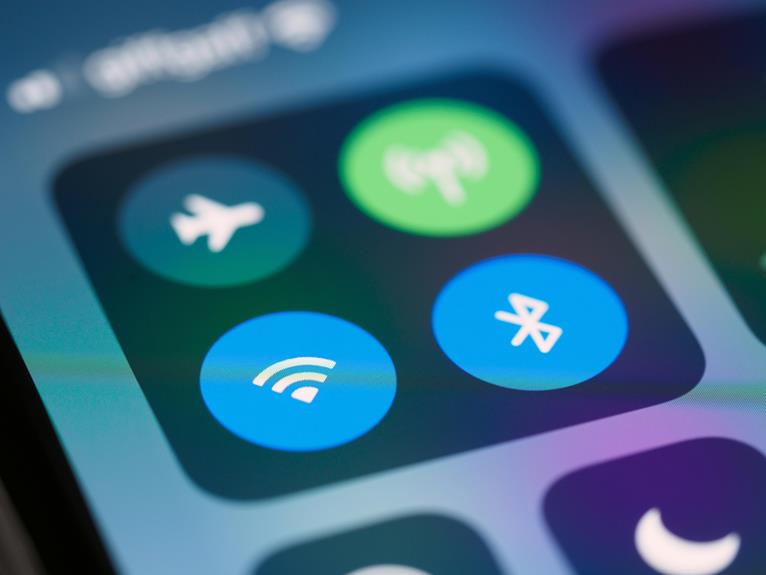
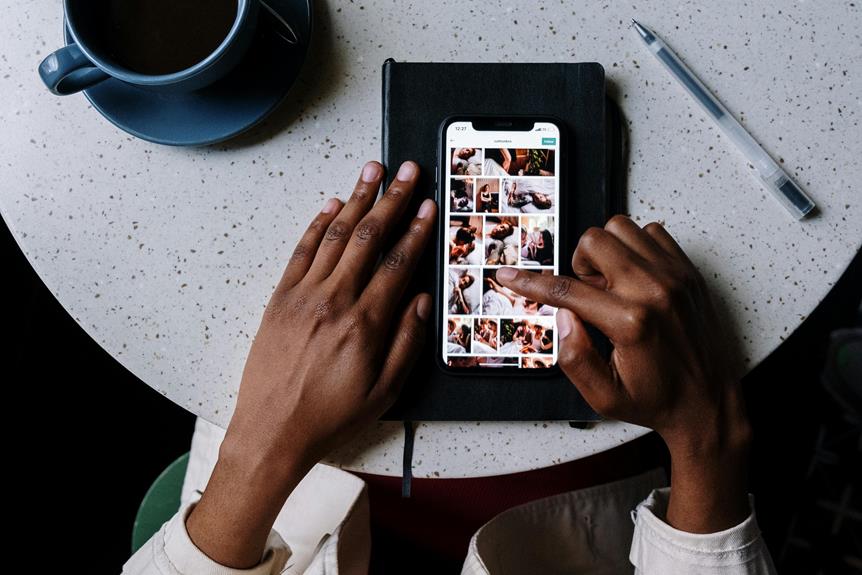
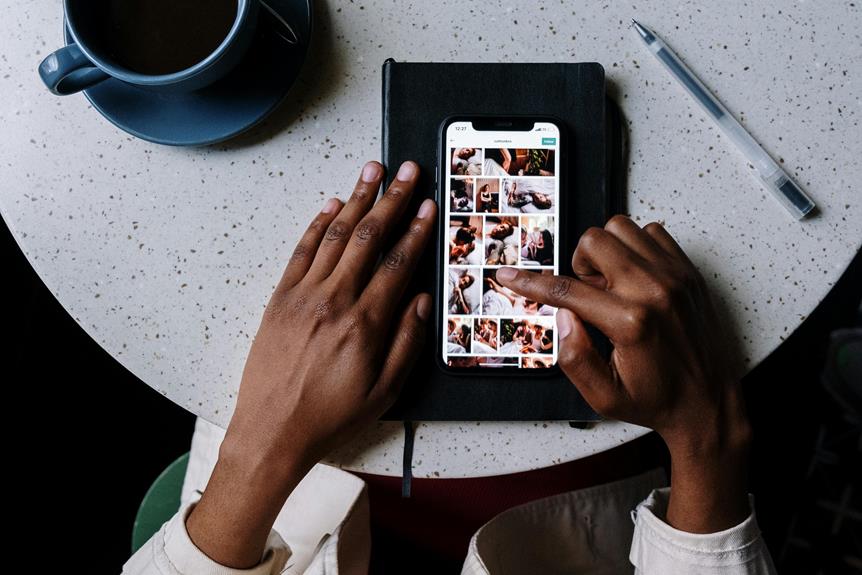
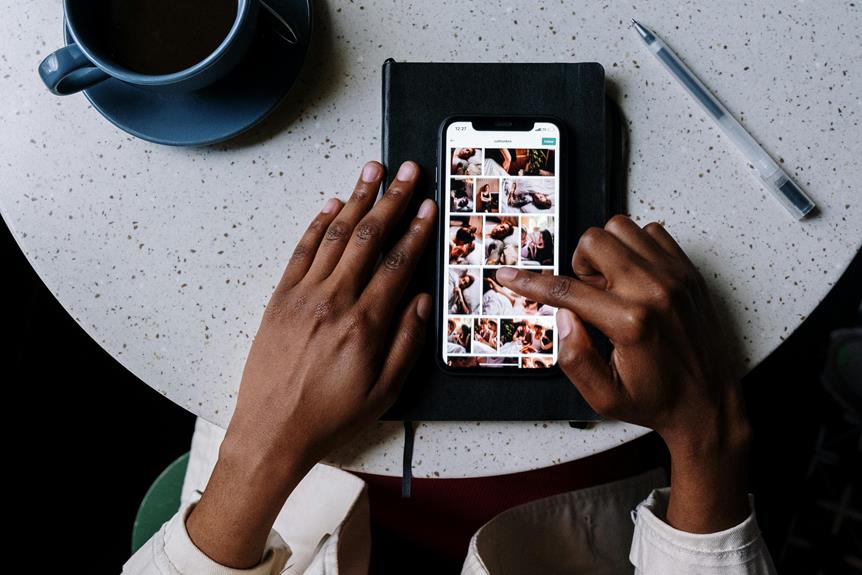


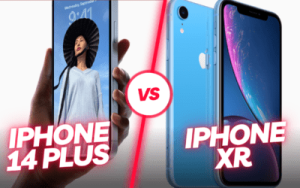
Post Comment